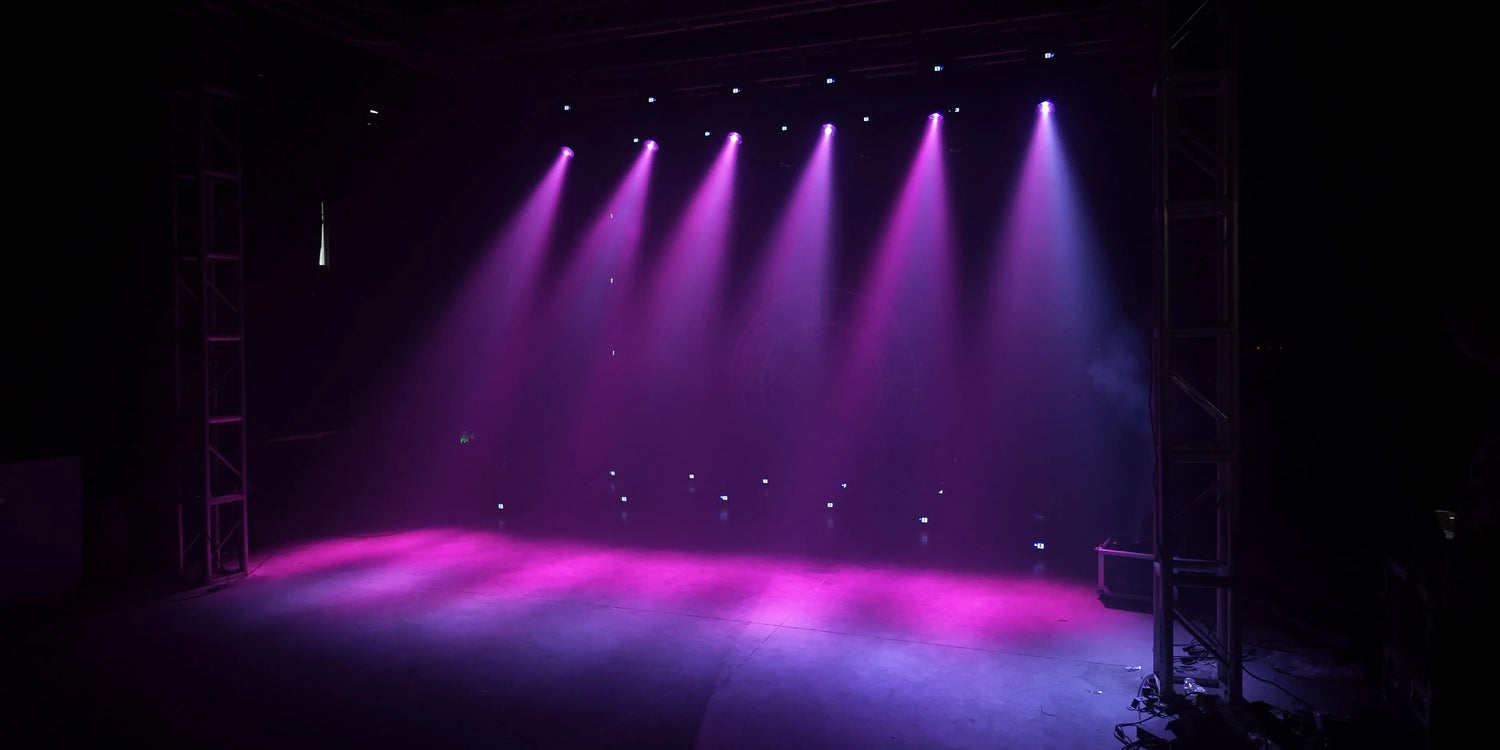Stage light flicker isn’t random — it’s a signal problem. When power, communication, or addressing isn’t perfectly matched, even the best fixture will show instability. In this guide, we’ll break down why it happens and how to fix it quickly, so your Betopper lights stay consistent from setup to showtime.

1. Loose or Low-Quality DMX Connections
DMX relies on a clean, continuous signal chain.
If one cable or connector is loose, the signal can drop or reflect back, causing flicker or random behavior.
How to check:
- Make sure every cable is fully seated in the DMX IN/OUT ports.
- Replace any cable that feels loose or has bent pins.
- Always use real DMX-rated cables, not audio XLRs — they may look similar but don’t carry digital data reliably.
- For long runs, end the line with a DMX terminator (a small plug with a 120 Ω resistor). It prevents signal echoes that cause instability.
Pro Tip:
Use short, high-quality DMX cables (under 30 m per segment) and keep connectors dust-free to ensure a stable signal flow.
Power Interference or Grounding Issues
If your lights flicker even in standalone mode, the cause is often power fluctuation.
Stage power can vary with heavy loads from audio amps, fog machines, or dimmers — all of which can affect LED drivers.
How to fix:
- Plug your lights into a dedicated power line separate from high-draw equipment.
- Use surge protectors or voltage stabilizers for consistency.
- Avoid running DMX and power cables in the same bundle — electromagnetic interference can cause random flashes.
Betopper fixtures are built with isolated power circuits and EMI protection to minimize interference, but stable power input always leads to smoother performance.
Pro Tip:
If one light flickers while others don’t, swap its power cable or socket.
If all flicker together, check your power source — not the lights.
ncorrect DMX Addressing or Overloaded Chain
Another common cause of instability is address conflict or signal overload.
When two fixtures share the same address or too many lights are chained together, the DMX signal weakens.
Check your setup:
- Ensure each fixture has a unique DMX start address.
- Verify the channel count for each fixture — if one uses 15 channels, the next should start at address 16, and so on.
- Limit each DMX line to around 32 fixtures. Use a DMX splitter if you need to control more.
Betopper fixtures clearly display DMX addresses and offer multiple channel modes (9CH / 15CH / 24CH), making setup easy and flexible.
Example:
Light A (15 CH) → start 1
Light B (15 CH) → start 16
Light C (15 CH) → start 31
Clean, stable signal every time.
Quick Troubleshooting Checklist
If you’re unsure where the issue lies, try this simple test:
- Bypass the chain. Connect your controller directly to one light.
→ If it’s stable, the issue is in cables or addressing, not the fixture. - Swap cables one by one. A single bad cable can disrupt the whole line.
- Reset DMX settings. Make sure channel modes match your controller profile.
- Update firmware (if applicable). Occasionally, minor software bugs can cause signal hiccups.
Within minutes, you’ll know exactly where the problem is — and likely have it solved.
Final Thoughts
Flickering lights don’t mean your gear has failed — they just need a little attention to signal, power, and address setup.
By following these quick checks, you’ll eliminate most common causes of instability before the next show even begins.
And with Betopper’s stable DMX drivers, protected power design, and precise channel control, you can trust your lights to run reliably every night.
⚙️ Need more help?
Visit Betopper’s DMX support center or contact us anytime:
https://betopperdj.com/




Dejar un comentario
Todos los comentarios se revisan antes de su publicación.
Este sitio está protegido por hCaptcha y se aplican la Política de privacidad de hCaptcha y los Términos del servicio.